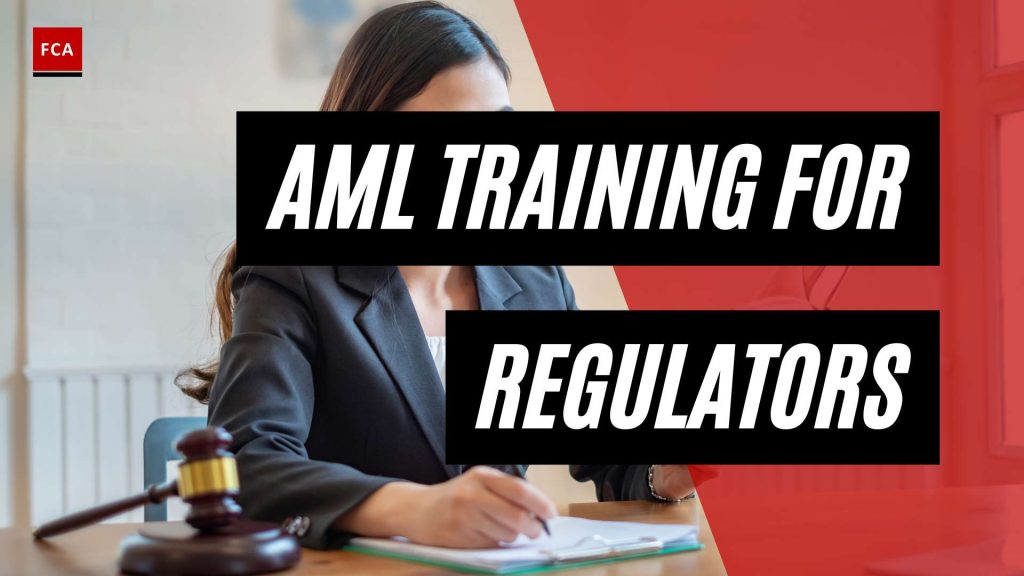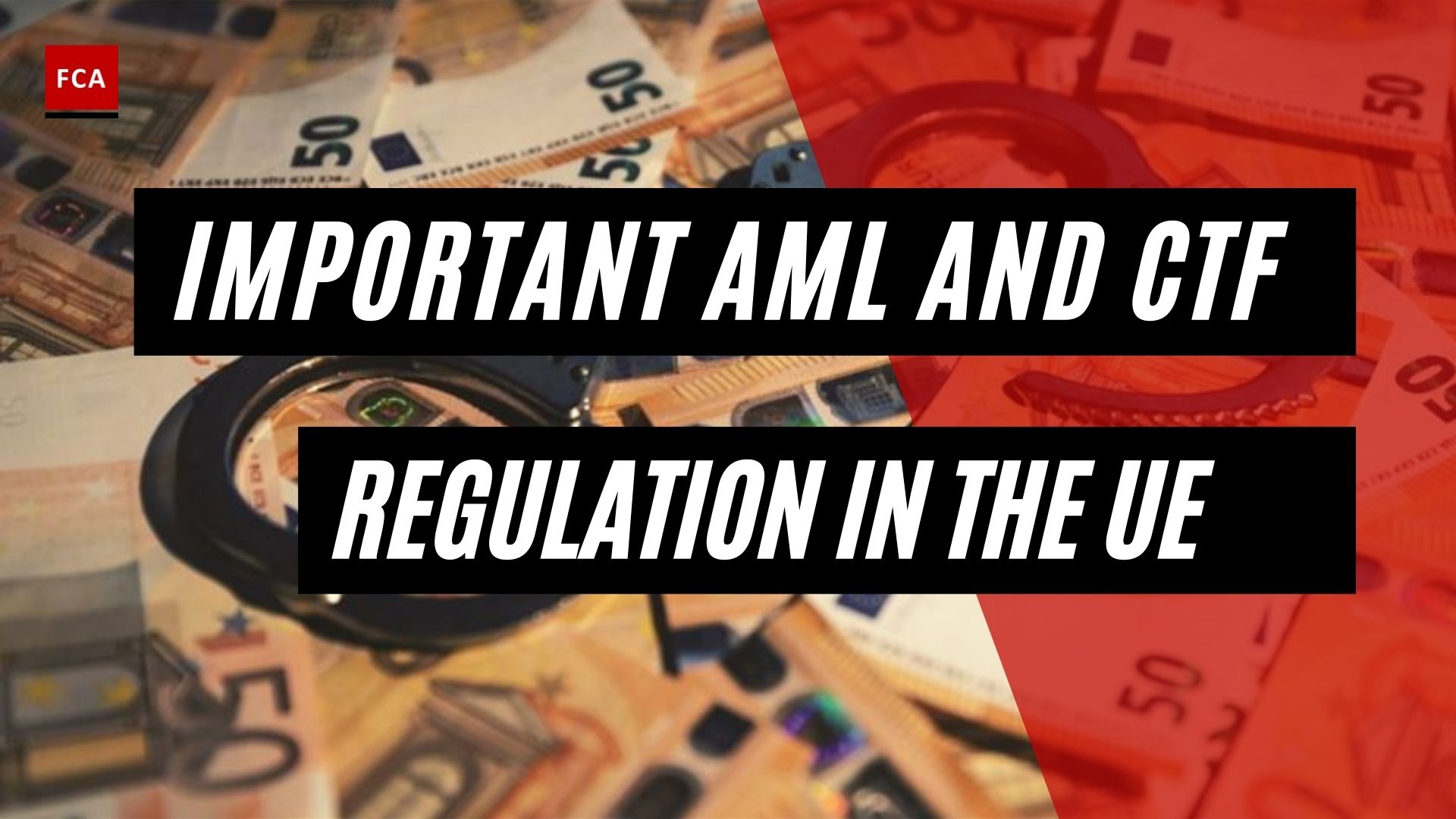AML Training for Regulators
Regulators play a crucial role in detecting and preventing money laundering, making it imperative to provide them with comprehensive AML training for regulators to enhance their knowledge and skills in combating financial crime. AML training equips regulators with the necessary tools to understand the evolving threats and typologies of money laundering (Financial Crime Academy).
Importance of AML Training for Regulators
Conducting AML training for regulators is essential to ensure they remain well-informed about the latest trends and techniques used by criminals to launder money. By staying ahead of these illicit activities, regulators can effectively fulfill their responsibilities and contribute to a more robust financial system (Financial Crime Academy). AML training helps regulators understand the intricacies of anti-money laundering laws and regulations, enabling them to detect potential compliance issues and take appropriate action to safeguard the integrity of the financial system (NorthRow).
By investing in AML training for regulators, regulatory bodies foster a culture of compliance and improve regulatory oversight. Well-trained regulators can more effectively supervise regulated entities, ensuring their compliance with anti-money laundering laws and regulations. This, in turn, contributes to the overall financial integrity of the system (Financial Crime Academy).
Benefits of AML Training for Regulators
Effective AML training equips regulators with the knowledge and skills necessary to detect and prevent money laundering activities. Here are some key benefits of AML training for regulators:
-
Enhanced Supervision: AML training empowers regulators to better supervise financial institutions and other regulated entities. It enables them to identify potential vulnerabilities, assess risks accurately, and implement appropriate measures to mitigate money laundering risks (NorthRow).
-
Improved Compliance: Through AML training, regulators gain a comprehensive understanding of anti-money laundering laws and regulations. This knowledge allows them to effectively assess compliance programs implemented by financial institutions and ensure regulatory requirements are met (Financial Crime Academy).
-
Stronger Financial System: AML training contributes to the overall strength and integrity of the financial system. Well-trained regulators are better equipped to address potential risks and vulnerabilities, thereby minimizing the potential for money laundering and the associated negative impacts on financial stability (NorthRow).
By providing rigorous AML training for regulators, regulatory bodies can reinforce the importance of compliance, enhance their ability to detect and prevent financial crime, and promote a more secure and trustworthy financial environment.
AML Training Requirements
To ensure effective compliance with anti-money laundering (AML) regulations, regulatory bodies have established specific AML training requirements for professionals in various roles. These requirements are designed to equip regulators with the necessary knowledge and skills to identify and address money laundering risks. This section will explore the regulatory responsibilities in AML training and compliance program requirements.
Regulatory Responsibilities in AML Training
Regulators play a vital role in the prevention and detection of money laundering activities. It is their responsibility to establish and enforce AML regulations, ensuring that financial institutions and other reporting entities comply with these regulations. In the context of AML training, regulators have the following responsibilities:
-
Setting Standards: Regulatory bodies develop guidelines and standards for AML training, outlining the knowledge and skills required for effective compliance. These standards serve as a benchmark for organizations to develop their training programs.
-
Monitoring Compliance: Regulators are responsible for monitoring the compliance efforts of reporting entities. This includes assessing the adequacy and effectiveness of their AML training programs. Regular inspections and audits are conducted to ensure that organizations meet the required training standards.
-
Providing Guidance: Regulators offer guidance and support to reporting entities in implementing AML training programs. They provide clarifications on regulatory expectations, best practices, and emerging trends in money laundering activities.
-
Enforcing Penalties: In cases of non-compliance, regulators have the authority to impose penalties and sanctions on reporting entities. These penalties serve as a deterrent and encourage organizations to prioritize AML training and compliance.
Compliance Program Requirements
To meet AML training requirements, reporting entities must establish comprehensive compliance programs. These programs are tailored to the nature of their business and the level of exposure to money laundering risks. Key components of compliance programs include:
-
Risk Assessment: Reporting entities must conduct a thorough risk assessment to identify and understand the specific money laundering risks associated with their operations. This assessment forms the foundation for developing an effective AML training program.
-
Compliance Policies and Procedures: Organizations must develop and implement robust compliance policies and procedures that cover various aspects of AML, such as client identification, record-keeping, reporting obligations, and risk assessment. These policies and procedures should be tailored to the organization’s size, structure, complexity, and level of exposure to money laundering risks.
-
Training Program: Reporting entities must establish and maintain a written, ongoing AML training program for employees, agents, or other authorized persons. This training program should cover the implementation and delivery of training, including the frequency and methods of training delivery. Regular updates and refresher courses should be provided to ensure that individuals stay up to date with the evolving money laundering techniques.
-
Record Keeping: Organizations are required to maintain records of AML training activities, including attendance records, training materials, and assessments. These records serve as evidence of compliance and can be requested by regulatory authorities during inspections or audits.
By adhering to these compliance program requirements, reporting entities can demonstrate their commitment to combating money laundering and ensure that their regulators are equipped with the necessary knowledge and skills to fulfill their responsibilities effectively.
To learn more about AML training requirements for specific roles, such as accountants, auditors, lawyers, compliance officers, banking professionals, financial analysts, risk managers, law enforcement, and insurance professionals, check out our articles on aml training for specific roles.
Key Components of AML Training
To equip regulators with the necessary skills and knowledge to effectively combat money laundering, AML training for regulators focuses on key components that help them understand the risks associated with money laundering, identify suspicious activities, and fulfill their reporting obligations.
Understanding Money Laundering Risks
One of the fundamental components of AML training for regulators is providing a comprehensive understanding of money laundering risks. Regulators must familiarize themselves with the techniques and methods used by criminals to launder illicit funds. AML training programs educate regulators on the various stages of the money laundering process, including placement, layering, and integration. By understanding these risks, regulators can more effectively detect and prevent money laundering activities within the financial system.
Identifying Suspicious Activities
Another critical aspect of AML training for regulators is developing the ability to identify suspicious activities. Regulators must be able to recognize red flags and indicators that suggest potential money laundering or terrorist financing. Training programs provide regulators with knowledge on common suspicious transaction patterns, unusual account activities, and customer behavior that may warrant further investigation. By honing their skills in identifying suspicious activities, regulators can take appropriate action to mitigate risks and protect the integrity of the financial system.
Reporting Obligations for Regulators
Regulators play a vital role in ensuring compliance with anti-money laundering laws and regulations. AML training programs emphasize the reporting obligations that regulators have when they encounter suspicious activities or potential money laundering. Regulators must understand the reporting requirements specific to their jurisdiction and the procedures for reporting suspicious transactions to the appropriate authorities. This training helps regulators fulfill their responsibilities effectively, ensuring that suspicious activities are properly investigated and appropriate actions are taken.
By focusing on these key components, AML training for regulators equips them with the necessary knowledge and skills to combat money laundering effectively. With a deep understanding of money laundering risks, the ability to identify suspicious activities, and a grasp of their reporting obligations, regulators can fulfill their crucial role in safeguarding the financial system and maintaining compliance with anti-money laundering regulations.
To explore AML training for specific roles, you can read our articles on AML training for accountants, AML training for auditors, AML training for lawyers, AML training for compliance officers, AML training for banking professionals, AML training for financial analysts, AML training for risk managers, AML training for law enforcement, and AML training for insurance professionals.
Effective AML Training Strategies
To ensure that regulators are equipped with the necessary skills and knowledge to effectively combat money laundering, it is crucial to implement effective AML training strategies. These strategies focus on providing regulators with practical tools and resources to identify and prevent illicit financial activities. Three key strategies for effective AML training for regulators are:
Case Studies and Real-World Scenarios
A crucial aspect of AML training for regulators is the inclusion of case studies and real-world scenarios. These provide practical examples of money laundering schemes, enabling regulators to understand the intricacies of illicit transactions and recognize red flags. By analyzing and discussing these cases, regulators can develop a deeper understanding of money laundering risks and methodologies. Real-world scenarios help regulators apply their knowledge to complex situations, enhancing their ability to detect and investigate suspicious activities. By incorporating case studies and real-world scenarios into training programs, regulatory authorities can equip their personnel with the practical expertise necessary to effectively combat money laundering.
Continuous Education and Training Programs
Continuous education and training programs are essential for regulators to stay updated on evolving money laundering risks and regulatory requirements. Financial criminals are continuously adapting their methods, making it crucial for regulators to stay ahead of them. Ongoing training ensures that regulators remain informed about the latest trends in money laundering and emerging risks. These programs can include regular workshops, seminars, webinars, and conferences that cover topics such as new money laundering techniques, regulatory updates, and best practices. By investing in continuous education and training, regulatory bodies can equip regulators with the knowledge and skills needed to effectively supervise regulated entities and combat financial crime.
Practical Knowledge and Skills Development
Effective AML training for regulators goes beyond theoretical knowledge and includes the development of practical skills. Training initiatives should focus on providing regulators with hands-on experience in identifying and investigating suspicious activities. This can be achieved through simulation exercises, role-playing scenarios, and practical workshops. By engaging in these activities, regulators can enhance their ability to apply AML regulations in real-world situations. Practical knowledge and skills development enable regulators to make informed decisions, detect money laundering patterns, and enforce compliance standards effectively. By integrating practical components into AML training programs, regulatory authorities can ensure that their personnel are well-equipped to tackle the challenges posed by money laundering.
By implementing these effective AML training strategies, regulatory bodies can enhance the capabilities of their regulators in combating money laundering. Case studies and real-world scenarios provide practical insights, continuous education and training programs keep regulators up to date with evolving risks, and practical knowledge and skills development enable regulators to apply AML regulations effectively. These strategies foster a culture of compliance, improve regulatory oversight, and contribute to a more robust financial system. By investing in comprehensive AML training for regulators, regulatory authorities can ensure that the financial system remains resilient against illicit financial activities.
Consequences of Inadequate AML Training
Insufficient anti-money laundering (AML) training for regulators can have far-reaching consequences that extend beyond the individual and impact the financial industry as a whole. It is crucial for regulators to receive comprehensive AML training to effectively fulfill their responsibilities in combating financial crime. Let’s delve into the potential consequences of inadequate AML training for regulators.
Non-Compliance Risks and Penalties
In today’s regulatory landscape, non-compliance with AML regulations carries significant risks and penalties. Financial institutions rely on regulators to enforce compliance and ensure adherence to AML requirements. Without proper training, regulators might struggle to identify and address potential compliance issues effectively, leaving institutions vulnerable to regulatory violations. The consequences of non-compliance can include hefty financial penalties, regulatory sanctions, and even criminal charges. In fact, anti-money laundering fines have increased by 50% in recent years (Source).
Reputation Damage and Criminal Investigations
Reputation is paramount in the financial industry. Inadequate AML training for regulators can result in reputational damage for both the regulator and the institutions they oversee. Failure to prevent money laundering and other illicit activities can erode public trust, damaging the reputation of financial institutions and regulators alike. Moreover, when regulators are unable to effectively address potential compliance issues, it can attract attention from law enforcement agencies, leading to criminal investigations that further tarnish the reputation of all parties involved.
Impact on Financial Institutions
The consequences of inadequate AML training extend beyond regulators to the financial institutions they oversee. When regulators lack the necessary skills and knowledge to identify and address money laundering risks, financial institutions may become unwitting participants in illicit activities. This can lead to severe financial losses, legal action, and reputational damage for the institutions involved. Well-trained regulators play a crucial role in minimizing the risk of financial institutions being utilized for money laundering and other illicit purposes, thereby safeguarding their integrity.
By providing comprehensive AML training to regulators, organizations can help mitigate the potential consequences associated with inadequate training. AML training equips regulators with the knowledge and skills needed to effectively combat financial crime, ensure regulatory compliance, and protect the integrity of both the financial industry and individual institutions. It is essential for regulators to stay updated on the latest AML regulations, industry trends, and best practices through ongoing education and training programs.
In our next section, we will explore AML training regulations in different sectors, including requirements for financial institutions, casinos and money services businesses, and obligations under the Bank Secrecy Act.
AML Training Regulations in Different Sectors
To combat money laundering and ensure compliance with anti-money laundering (AML) regulations, specific training requirements are imposed on various sectors. These regulations aim to equip professionals in different roles with the necessary knowledge and skills to effectively detect and prevent financial crimes. Let’s explore the AML training requirements for financial institutions, casinos and money services businesses, and the regulations under the Bank Secrecy Act (BSA).
AML Training Requirements for Financial Institutions
In the United States, AML training is typically required for financial institutions and their employees under the Bank Secrecy Act (BSA) and its implementing regulations. Financial institutions, including banks, credit unions, and other entities involved in financial transactions, play a crucial role in combating money laundering and terrorist financing. They are required to establish comprehensive AML training programs to educate their employees on the identification and reporting of suspicious activities.
The training programs for financial institutions cover various topics, including understanding the nature of money laundering risks, recognizing red flags associated with illicit activities, and complying with reporting obligations. These programs are designed to ensure that employees are aware of their responsibilities in detecting and preventing money laundering activities within the institution. A well-trained workforce contributes significantly to reducing financial crime risks and maintaining the integrity of financial institutions.
AML Training for Casinos and Money Services Businesses
In addition to financial institutions, certain sectors such as casinos and money services businesses are also subject to AML regulations and training requirements. These sectors are considered vulnerable to money laundering due to the nature of their operations and the potential for large cash transactions.
Casinos, for example, are required to implement robust AML training programs for their employees, particularly those involved in cash handling, customer service, and gaming operations. The training focuses on identifying suspicious transactions, understanding the risks associated with money laundering in the casino environment, and complying with reporting obligations.
Money services businesses, including money transmitters, check cashers, and currency exchanges, are also required to provide AML training to their employees. This training emphasizes the recognition of suspicious activities, compliance with reporting requirements, and the importance of customer due diligence.
AML Training under the Bank Secrecy Act
The Bank Secrecy Act (BSA) is a key piece of legislation in the United States that establishes AML requirements for financial institutions. It mandates that financial institutions implement comprehensive AML compliance programs, which include training components. The compliance program requirements under the BSA apply to all reporting entities (REs), ensuring that they have effective measures in place to detect and prevent money laundering and terrorist financing.
The training programs developed under the BSA should cover a range of topics, such as understanding money laundering risks, recognizing suspicious activities, and reporting obligations. These programs are designed to provide employees with the necessary knowledge and skills to fulfill their regulatory responsibilities and contribute to the overall AML efforts of the institution.
By adhering to AML training regulations in different sectors, professionals can enhance their ability to detect and prevent money laundering activities. AML-trained employees are more likely to understand the importance of detecting and reporting suspicious activities, thereby minimizing the risk of a company being used for money laundering and protecting the reputation of the business.
For professionals in specific roles, such as accountants, auditors, lawyers, compliance officers, banking professionals, financial analysts, risk managers, law enforcement, and insurance professionals, specialized AML training is also available to address the unique requirements of their respective fields.
Case Study: Goldman Sachs and AML Training
Examining real-world examples can provide valuable insights into the importance of AML training for employees. One such case study involves Goldman Sachs, a widely renowned bank and financial services company. In 2020, Goldman Sachs faced a bribery scheme that resulted in a record-breaking $2.9 billion fine imposed by anti-money laundering regulators. This case highlights the critical significance of AML training for employees in the financial industry, emphasizing the need for strong compliance measures and training programs to mitigate the risks associated with money laundering (Medium).
Importance of AML Training for Employees
AML training plays a pivotal role in ensuring that employees understand their responsibilities in detecting and preventing money laundering activities. By undergoing comprehensive AML training, employees gain the necessary knowledge and skills to identify suspicious transactions, comply with regulatory requirements, and effectively contribute to the overall anti-money laundering efforts of their organization.
Trained employees are more likely to recognize the red flags associated with money laundering, such as unusually large transactions, inconsistent customer information, or complex transaction patterns. This heightened awareness enables them to take appropriate actions, such as reporting suspicious activities to the relevant authorities, thereby minimizing the risk of the company being used as a conduit for money laundering. AML training cultivates a culture of compliance within the organization, empowering employees to act as the first line of defense against money laundering (Medium).
Demonstrating Compliance with AML Regulations
AML training is not only crucial for reducing the risk of money laundering but also for demonstrating an organization’s commitment to compliance with AML regulations. Financial institutions and other businesses subject to AML requirements are typically required to implement effective compliance programs that include training components. By providing comprehensive AML training to their employees, organizations showcase a good-faith effort to comply with legal obligations and ensure that their staff is well-equipped to fulfill their AML-related responsibilities.
In addition to meeting regulatory requirements, AML training helps organizations establish a strong defense against potential legal and reputational risks. By demonstrating a proactive commitment to AML compliance, companies can enhance their reputation, build trust with stakeholders, and protect themselves from potential penalties and legal action (Medium).
Consequences of Money Laundering
The consequences of money laundering can be severe for both individuals and organizations involved. Money laundering schemes can result in substantial financial losses, damage to reputations, and criminal investigations. In the case of Goldman Sachs, the bribery scheme led to a record-breaking fine of $2.9 billion imposed by anti-money laundering regulators. This significant penalty serves as a stark reminder of the potential consequences that organizations may face when their AML compliance measures fall short.
Beyond financial and reputational implications, money laundering also carries legal ramifications. Individuals found guilty of money laundering can face imprisonment for up to 20 years, highlighting the seriousness of this crime. By prioritizing AML training for employees, organizations can minimize the risks associated with money laundering, protect their reputation, and ensure compliance with legal requirements (Medium).
By examining the case study of Goldman Sachs, it becomes evident that AML training for employees is essential in mitigating the risks of money laundering and ensuring compliance with AML regulations. The importance of investing in comprehensive AML training programs cannot be overstated, as they play a crucial role in cultivating a culture of compliance, preventing financial crime, and safeguarding the reputation and integrity of organizations operating in the financial sector.
Best Practices for AML Training
To ensure effective compliance with anti-money laundering (AML) regulations, it is essential to implement best practices in AML training. These best practices help create a robust framework for regulators to understand and mitigate the risks associated with money laundering. Here are three key best practices for AML training:
Promoting a Culture of Compliance
Promoting a culture of compliance is crucial in creating an environment where regulators prioritize AML training and understand its significance. A strong culture of compliance ensures that all individuals within an organization are aware of their responsibilities and actively contribute to the prevention of money laundering.
To promote a culture of compliance, organizations should:
- Clearly communicate the importance of AML training and its role in mitigating money laundering risks.
- Provide regular AML training sessions to regulators, emphasizing the consequences of non-compliance and the benefits of adherence to AML regulations.
- Encourage regulators to report any suspicious activities promptly, fostering a sense of vigilance and accountability within the organization.
By embedding a culture of compliance, regulators are more likely to be proactive in identifying and reporting suspicious activities, contributing to a robust AML program.
Ongoing Monitoring and Risk Assessment
Ongoing monitoring and risk assessment are critical components of effective AML training. Regulators should continuously evaluate and update their knowledge of money laundering risks, as these risks evolve over time. By staying up-to-date with emerging trends and typologies, regulators can enhance their ability to detect and prevent money laundering activities.
To facilitate ongoing monitoring and risk assessment, organizations should:
- Provide access to relevant resources, such as industry publications, regulatory updates, and training materials.
- Encourage regulators to participate in industry conferences, webinars, and workshops to stay informed about the latest trends and best practices in AML.
- Conduct regular internal audits and assessments to identify any gaps or weaknesses in the organization’s AML training program.
By maintaining a proactive approach to ongoing monitoring and risk assessment, regulators can adapt to changing circumstances and effectively address potential money laundering threats.
Collaboration with Regulatory Authorities
Collaboration with regulatory authorities is vital for regulators to stay abreast of regulatory changes, industry developments, and emerging money laundering risks. By actively engaging with regulatory authorities, regulators can gain valuable insights and guidance on AML training requirements and expectations.
To foster collaboration with regulatory authorities, organizations should:
- Establish channels of communication with relevant regulatory bodies, participating in industry forums and working groups.
- Attend training sessions and conferences organized by regulatory authorities to gain insights into their expectations and regulatory priorities.
- Seek guidance from regulatory authorities when faced with complex AML training challenges or regulatory interpretations.
By establishing strong relationships with regulatory authorities, regulators can enhance their understanding of AML regulations and ensure alignment with industry best practices.
Implementing these best practices in AML training helps regulators develop the necessary skills and knowledge to effectively combat money laundering. By promoting a culture of compliance, conducting ongoing monitoring and risk assessment, and collaborating with regulatory authorities, regulators can contribute to a robust AML framework that protects the financial system from illicit activities.
For more information on AML training for specific roles, you can explore our articles on AML training for accountants, AML training for auditors, AML training for lawyers, AML training for compliance officers, AML training for banking professionals, AML training for financial analysts, AML training for risk managers, AML training for law enforcement, and AML training for insurance professionals.








